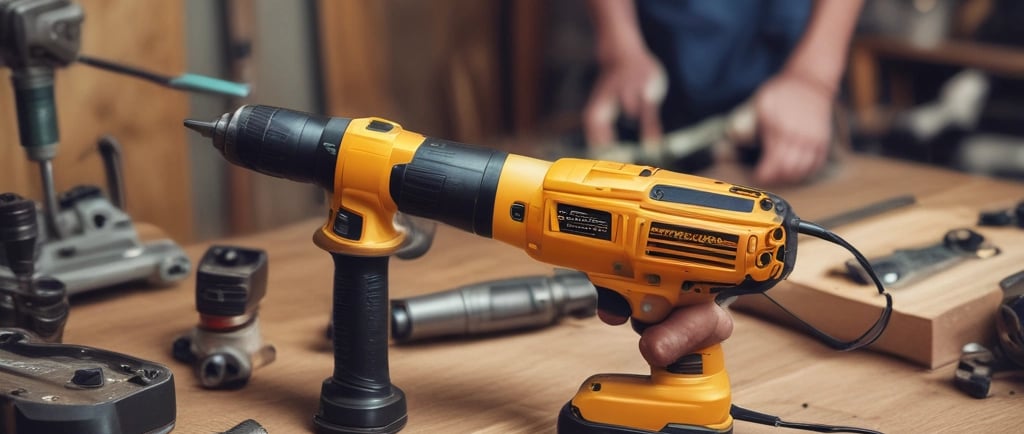Effective Vibration Reduction Tips for Long Sessions
GENERAL BLOG
11/7/20254 min read


Understanding Vibration and Its Effects
Vibration is a mechanical phenomenon involving oscillations of an object around an equilibrium point. In various industries, workers often encounter vibrations through tools and machinery, especially during prolonged sessions. The continuous exposure to these vibrations can have significant repercussions on the human body, especially in the hands and arms, leading to conditions such as Hand-Arm Vibration Syndrome (HAVS). HAVS is characterized by symptoms such as numbness, tingling, and a reduction in blood flow to the fingers, which can result in permanent damage if not adequately managed.
The effects of vibration extend beyond just localized discomfort. Prolonged exposure can lead to muscle fatigue, creating an imbalance in muscle strength and endurance. This fatigue does not only diminish the capability to perform tasks effectively but can also increase the risk of workplace accidents due to impaired coordination and reduced grip strength. Additionally, fatigue can lead to psychological impacts, including stress and decreased job satisfaction, further affecting overall performance.
Ignoring the management of vibrations can create a cascading effect on productivity and safety. Those who work in environments where vibration is prevalent must be aware of these consequences to take necessary precautions. By understanding the mechanics and implications of vibration on the body, one can appreciate the importance of integrating vibration reduction strategies into daily practices. These measures can include the use of anti-vibration gloves, ergonomic tool designs, and regular breaks to minimize exposure. Ultimately, acknowledging vibration’s impact serves as a foundational step toward maintaining health and performance in the workplace.
Choosing the Right Equipment
When it comes to minimizing vibration during prolonged use, selecting the appropriate tools and equipment plays a crucial role. Ergonomically designed products can significantly reduce the strain associated with extended use, helping to promote user comfort and productivity. Therefore, one should prioritize tools that offer good grip and positioning, thus enabling a natural posture and reducing the likelihood of injury or discomfort.
A pivotal aspect of equipment selection is to look for anti-vibration technology. Many manufacturers now incorporate this technology into their products, functioning to absorb or dampen the vibrations generated during use. Equipment such as power tools, hand-held devices, and machinery often come with features designed to minimize vibration impact on the user. For instance, tools may have padded handles, vibration-dampening materials, or even advanced suspension systems to mitigate the negative effects of vibration.
Furthermore, maintaining tools in optimal working condition contributes significantly to vibration reduction. Regular maintenance checks, including ensuring that blades are sharp, and components are properly secured, not only enhances performance but also decreases the likelihood of excessive vibration due to abnormal wear or loosening parts. Investing in high-quality tools with a reputation for longevity can also minimize the frequency of maintenance required.
When considering investments, it is beneficial to conduct thorough research on the available options. Look for reviews or seek expert recommendations regarding the most effective ergonomic tools and equipment with anti-vibration features. By carefully choosing the right equipment and maintaining it diligently, users can substantially lower vibration levels, ultimately improving their overall experience and efficiency during long sessions. This strategic approach will yield considerable benefits in terms of comfort and productivity in professional and personal tasks alike.
Implementing Effective Techniques and Practices
Long sessions of work, especially those involving manual labor or prolonged use of vibrating tools, can lead to discomfort and potential health issues if not managed properly. To mitigate the effects of vibration, certain techniques and practices can be implemented to enhance comfort and productivity.
First and foremost, maintaining an optimal posture is crucial. Workers should ensure that their back is straight and shoulders are relaxed while seated or standing. Adjusting the height of workstations can significantly reduce strain on the body, thereby minimizing vibration impact. Additionally, ensuring that feet are flat on the ground or supported by a footrest helps promote stability and balance, which can lead to reduced muscle tension.
Hand positioning also plays a vital role in reducing vibration exposure. It is advisable to keep hands close to the tool’s grip and avoid excessive force during operation. Applying a relaxed grip can allow for better control and reduce the transmission of vibrations through the hands. Incorporating periodic changes in grip or utilizing tools that feature vibration-dampening grips can further alleviate discomfort.
Moreover, workers should be encouraged to take regular breaks, allowing their muscles time to recover. Short, frequent pauses enable the body to reset and prevent cumulative fatigue. During these breaks, incorporating stretching exercises can significantly enhance blood flow and flexibility, helping to counteract the effects of sustained vibration exposure. Simple stretches focusing on the hands, wrists, arms, and shoulders can provide immediate relief.
Lastly, utilizing specialized tools, such as vibration dampening mats and gloves, can offer added protection during work activities. These tools are designed to absorb vibrations, thus reducing the strain on the body significantly. By integrating these practices, workers can maintain a healthier work environment and minimize the adverse effects of prolonged vibration exposure.
Monitoring and Assessing Vibration Exposure
Effectively monitoring and assessing vibration exposure is essential for maintaining health and preventing long-term harm to individuals who regularly use vibrating tools or machinery. Several methods and tools are available to measure vibration levels accurately. These can range from simple handheld devices to more sophisticated vibration monitoring equipment. Handheld vibration meters are widely used, offering immediate feedback on the levels of vibration produced by equipment. They can help users make informed decisions about their work techniques and equipment usage, allowing for timely adjustments when exposure levels become excessive.
In addition to monitoring devices, users can implement self-assessment techniques. Regular breaks and rhythmical changes in tasks can provide inherent checks on exposure. By being attuned to their body’s responses, workers can recognize when they may be reaching their limits. Symptoms such as numbness, tingling, or loss of strength in the fingers are potential warning signs and should prompt immediate assessment of the vibration levels encountered during work.
Additionally, it is helpful to maintain detailed records of vibration exposure times and any symptoms experienced. Keeping comprehensive logs can not only assist individuals in managing their own responsibilities but can also facilitate crucial conversations with employers or health and safety officials. By documenting exposure data, employees can present evidence that may support the need for preventive measures or interventions in the workplace. Implementing a systematic approach to tracking vibration exposure and related symptoms is a proactive strategy to enhance safety and overall well-being, ultimately leading to a more informed workforce regarding vibration-related risks.
